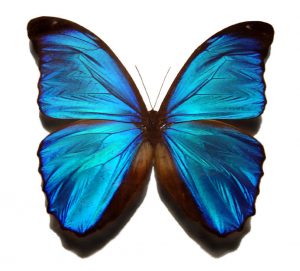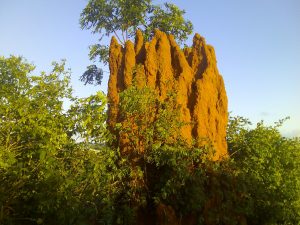Short answer to the title is: we are and we should be. Many new innovations being made are based on nature. There is a reason why certain animals and plants evolved the way that they did and more and more innovators and inventers are using them as inspiration. “Biomimetics or biomimicry is the imitation of the models, systems, and elements of nature for the purpose of solving complex human problems.”*
Throughout man’s history, nature has provided the answers to many engineering problems such as self-healing abilities, environmental exposure tolerance and resistance, capturing solar energy, water-resistance, as well as many more. Probably the best known modern invention that used the philosophy of biomimicry would have to be Velcro; the fastener that everyone loves to hate but no one can argue its handiness even when it makes a heck of a racket opening it and anyone with long hair can relate to getting your hair caught in it. Swiss electrical engineer George de Mestral invented the first touch fastener in 1941 when he went for a walk in the woods and noticed how burdock seeds stuck to his dog’s coat. He thought that these little hooks on the seeds could be turned into something useful.

We will now discuss a few of the more interesting (well, at least to me) potential commercial applications. Let us start with the Morpho butterfly. It has a gorgeous, brilliant blue colour that has this colour through structural colouration as opposed to pigmentation. Light waves are reflected at specific wavelengths to create these vibrant colours due to multilayer interference, diffraction and scattering properties. Basically, there are microscopic ridges and cross-ribs that reflect the light in different ways to achieve its colouration. The same principles can be replicated using metal oxides or metal alkoxides to engineer new display technology using interferometric modulation to reflect light so that only the desired colour is visible in each pixel of the display.
A humpback whales fin is perfectly designed for cutting through the water. They have these strange-looking irregular bumps called tubercles along the leading edge which give these fins a grip to the water. Research in wind turbines of this design has shown that this type of fin has an 8% improvement in lift and a whopping 32% reduction in drag as opposed to a smooth sided fin. This can be used to improve the safety and performance of airplanes, fans, and much more.

Termites have gotten a bad reputation for destroying homes with their need for wood but they are also some of the cleverest architects. Their mounds of soil, saliva, and dung are often meters high and have been found to function almost like a set of lungs. Their system of tunnels can maintain an even temperature throughout the year in places such as Africa where the temperatures can range from 1 to 40 degrees Celsius. These mounds are being studied and the possibilities for making more efficient heating/cooling systems in human buildings are plenty. You can watch a YouTube video about termite mounds here: https://www.youtube.com/watch?time_continue=5&v=Ygk8dqwOMZw
This one may give you the heebie-jeebies a bit but it is ingenious. Have you ever noticed that you have gotten a mosquito bite and do not remember it happening? Researchers and engineers at Kansai University in Japan are looking at the physiology of a mosquito’s mouth to design a needle that uses pressure to stabilize and painlessly glide through the skin. This idea is always being utilized by researchers in the UK to make a neuroprobe that requires the least amount of force to move thus leaving the brain undamaged.
As you can see by the above examples, biomimicry is being utilized in many fields and I have only touched upon a few of them. Nature has these time-tested patterns and strategies and humanity would be stupid not to learn from them. Many of today’s problems may find their solutions by looking at the world around us. Species survive because they are successful in this world. Have you looked at something in the natural world and thought, hmm, that could work? Who knows; maybe that idea would be the next big thing to help the world.
–Janice Willson
References:
https://biomimicry.org/what-is-biomimicry/#
* https://en.wikipedia.org/wiki/Biomimetics
Photo Sources: Gregory Phillips (Wikimedia Commons), blue morpho butterfly
Veennema (Wikimedia Commons), Termite mound in West Africa

